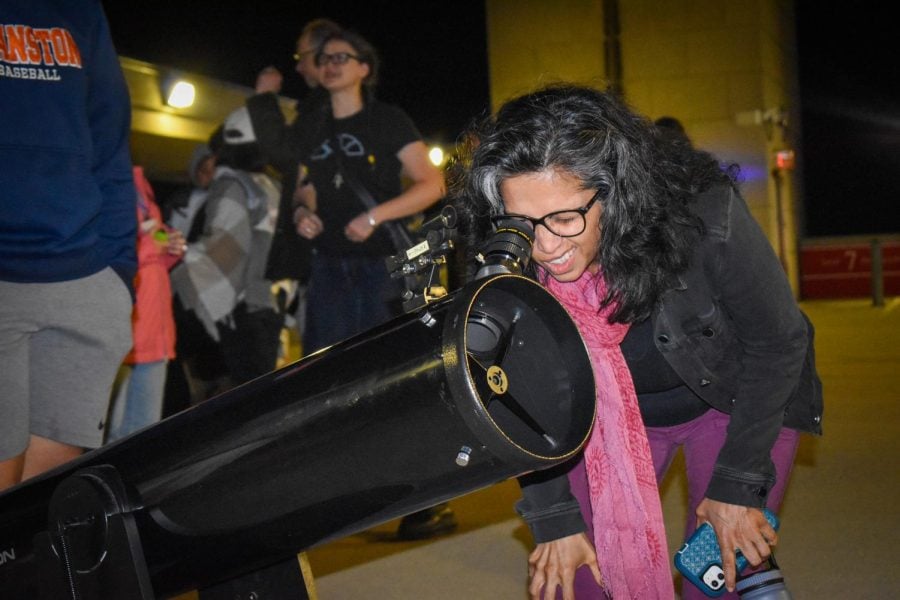Dearborn Observatory and CIERA host public viewing of total lunar eclipse
Jacob Wendler/The Daily Northwestern
Community members gathered atop the South Campus Parking Garage Sunday night to view the total lunar eclipse which turned the moon red.
May 17, 2022
Northwestern students and Evanston residents gathered atop the South Campus Parking Garage Sunday night to view the total lunar eclipse of the May full moon, also known as the flower moon.
The Dearborn Observatory and NU’s Center for Interdisciplinary Exploration and Research in Astrophysics organized the free public viewing, providing community members the opportunity to view the rare event.
Several months of planning and coordination went into preparing for the event, according to astronomy and physics Prof. Michael Smutko, who currently serves as the director of the Dearborn Observatory. He said while clouds obstructed the moon for some of the event, he was happy to host it.
“This is the first time in a few years that we’ve had a total lunar eclipse visible from Chicago,” Smutko said. “These are just really nice events that, every year or two, you can really get a sense of the connection between the heavens and what life is down here on Earth.”
Attendees viewed the eclipse through several telescopes on the top level of the garage, with students, faculty and postdoctoral fellows available to answer questions about the eclipse.
Weinberg senior Sydney Matrisciano, a telescope operator at Dearborn, said the observatory brought smaller reflecting telescopes to the event because they are portable and can withstand inclement weather.
Medill freshman Campbell Cox was inspired to attend the event because of an interest in astronomy, Cox said.
“I’m a little disappointed that it’s cloudy, but it’s been super fun and there are gaps with no clouds,” Cox said at the viewing. “It’s super cool to see, and I’ll stay here as long as necessary to see it in its totality.”
Weinberg senior Francesca Docters also said she was disappointed the weather led to reduced visibility. Docters said she heard about the event from Smutko, with whom she is currently taking Physics 130-3: College Physics.
The Dearborn Observatory reopened last month after a two-year closure due to the pandemic and construction. In addition to hosting public tours Friday nights, the observatory often hosts events with CIERA. CIERA Astronomer Evenings, which are held on the last Friday of every month, give community members the opportunity to learn more about the starry sky from different astronomy experts.
CIERA Education & Outreach Coordinator James Schottelkotte said lunar eclipses are “rare celestial events” and that this one was particularly unique because it was visible from the entire country.
“It’s just a really cool phenomenon to see the moon go through these changes all in just a couple hours,” Schottelkotte said. “(It goes) through not only changes of the shadow, but changes of color… and we can explain that with science.”
Those who did not get a chance to view Sunday’s eclipse will have another chance in the fall: the next total lunar eclipse fully visible from the Chicago area will be November 8.
Email: [email protected]
Twitter: @jacob.wendler
Related Stories:
— Dearborn Observatory reopens to public after two-year closure
— Brainstorm: Looking for life among the stars
— Frozen dome at Dearborn Observatory doesn’t deter eclipse watch party












